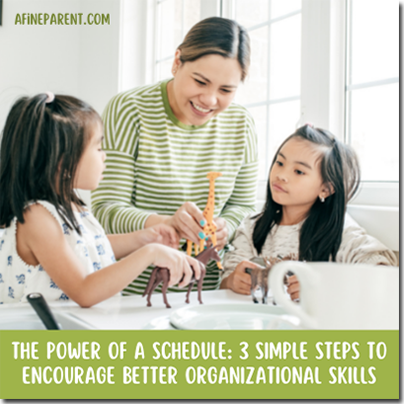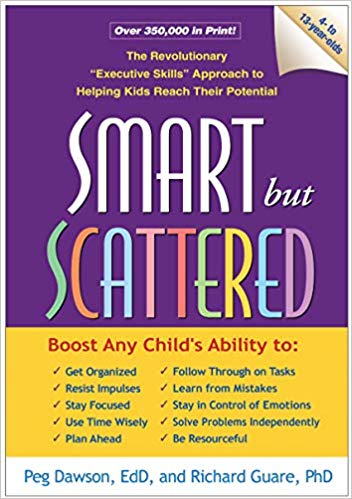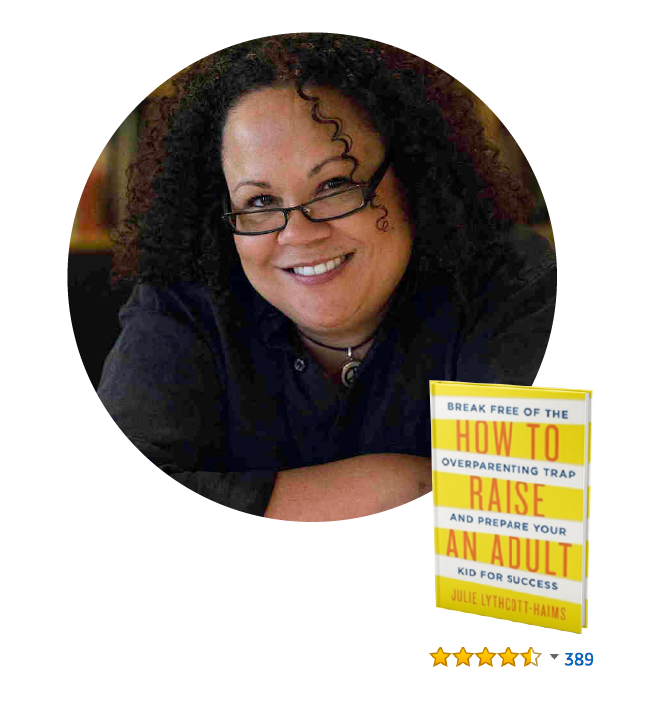 Coming home from work at six in the evening, I stared in dismay as I stepped into my daughter’s room. Her school books lay untouched and her room looked as though a cyclone had recently touched base.
Coming home from work at six in the evening, I stared in dismay as I stepped into my daughter’s room. Her school books lay untouched and her room looked as though a cyclone had recently touched base.
“What is this?” I tried (unsuccessfully) not to shout. “Didn’t I call and tell you to finish your school work and tidy your room before I returned?”
My 11-year-old daughter looked confused.
“Oh, yes…,” my daughter said, looking around the room as though someone had just shone a light on it. “I didn’t remember…” she said softly.
 What am I doing wrong, I thought? Why is it so difficult for my daughter to remember a few simple chores? Now that school had shifted back to in-person mode, was it getting too tough for my child to collect and retain everything that needed to be done? Why was my daughter so scattered that she could not complete simple organizational tasks- even when I asked her to do them?
What am I doing wrong, I thought? Why is it so difficult for my daughter to remember a few simple chores? Now that school had shifted back to in-person mode, was it getting too tough for my child to collect and retain everything that needed to be done? Why was my daughter so scattered that she could not complete simple organizational tasks- even when I asked her to do them?
As frustrating as it may feel to watch our child’s disorganization interfere with their success, it is most likely not due to a lack of motivation. Dr. Peg Dawson, a clinical psychologist and bestselling author of “Smart but Scattered Kids,” reminds us that children are still developing the executive skills needed to be organized.
Executive skills are the brain-based processes that help children regulate their behavior and set and achieve goals. Executive skills are managed in the frontal lobe of the brain and while they begin to develop shortly after birth, they will take up to 25 years to mature!
What does this mean? The disorganization of our scattered child is not due to a lack of motivation, laziness, low intelligence or oppositional behavior. Instead, our disorganized children simply need some more time (and help!) developing the executive skills needed to plan and execute tasks.
Teaching our children how to schedule tasks is just one of the many ways in which we can assist in the development of executive skills needed for our children to be more organized. If we look at our adult lives, most of us utilize schedules to organize tasks: appointments, work obligations, meetings, and the daily list of things to do. Learning how to use a schedule is not only helpful in the development of executive skills but will be a skill long served into adulthood.
The upsides of our children learning how to plan a time-scheduled day include:
- School work and everyday tasks like hygiene or cleaning a room are unavoidable. Adhering to a schedule ensures that daily tasks finish on time, leaving enough free hours to indulge in fun activities.
- A planned day makes a child feel more in control and gives comfort. Uncertainty can create stress and confusion in a child’s mind about what to expect as well as what is expected of them.
- When kids realize that using a schedule frees up more time for leisure, a system of self-motivation kicks in and makes our task as parents a lot easier.
- A daily schedule helps a child learn independence. A child only needs to look at a list to know what’s next and can more easily complete the task without a trail of instructions from a parent.
As I took a look at my daughter’s list of responsibilities, a startling fact came to light. If my daughter organized her time using a schedule, she could end up getting a lot more leisure time than she anticipated!
Once we began talking about the benefits, my daughter, who had thus far resisted the idea of scheduling her time, began to understand how a daily plan was a foolproof method to get to “me-time” faster. She could add more music to her playlist or resume scrapbooking— two things she absolutely loves—once she fits all her tasks into an easy-to-keep schedule.
Convincing our children to create and work off of a schedule is key to its success… but is hardly as simple as just throwing a list up on the fridge! Children often resist orders thrown at them and a list created by parents falls under the category of one-way commands. Letting our children take the reins with our gentle guidance can be very effective in getting kids interested in making a schedule.
Read on for 3 simple steps for how to use the power of a schedule to encourage better organizational skills:
Step #1: Start with a Vision Board
 Finding purpose to a schedule can be a concrete starting point and vision boards are an excellent tool to help children learn goal setting and can give children a visual reminder of why the schedule is important!
Finding purpose to a schedule can be a concrete starting point and vision boards are an excellent tool to help children learn goal setting and can give children a visual reminder of why the schedule is important!
Children can set targets and plan their future using vision boards that can be created easily at home. Making a vision board requires only a few simple tools with hand drawings or cutouts of pictures and quotes from magazines. These fun boards provide an opportunity for parents to spend quality time with children as they unleash their creativity and brainstorm ideas for the board.
Vision board ideas can be related to adhering to staying organized, self-care, academic goals, motivation to exercise or eat healthy; and can also focus on the daily schedule that a child aspires to follow to reach those goals. Inspirational quotes and graphics add to the appeal of a vision board.
Vision board apps are digital versions of traditional vision boards and can be created quickly and inexpensively on any phone, or device. A few popular apps include:
- Corkulous is a versatile app loaded with emojis, stickers, along with the standard fare of text and images on a quirky cork background.
- Dream Vision Board scores with its wide range of available affirmations, symbols, and backgrounds.
- Jack Canfield Vision Board, created by the popular inspirational speaker and author of the ‘Chicken Soup for the Soul’ series, is all about using positive affirmations, goals, and inspiring photos.
- My Vision Board lets a child create a dashboard with goal-tracking features.
- Visuapp provides soothing music to accompany the vision board creation along with a gratitude journal and an innovative Feng-Shui 9-section vision board.
Step #2: Choose the Schedule
 Once goals are mapped out, we can move on to finding a schedule presentation that will work best for our child! Children love variety and designs that are visually pleasing, themed, interactive and creative. It is important to have a child involved in the process of choosing or making their schedule, to encourage a sense of control and ownership.
Once goals are mapped out, we can move on to finding a schedule presentation that will work best for our child! Children love variety and designs that are visually pleasing, themed, interactive and creative. It is important to have a child involved in the process of choosing or making their schedule, to encourage a sense of control and ownership.
Are schedules a one-size-fits-all scheme? Not really! I learned this as I began the research on how to create a planner for my daughter. Age-specific planners are required to allow for differences in levels of reading and cognition. Here’s what may work for different age groups of children:
Young Children (Toddler through Kindergarten):
Visual planners loaded with colors and pictures work well for children from toddler age to young primary school age, who are yet to master fluent reading skills. Gentle help in reading the chart and following the routine daily is important to establish a schedule. Simple instructions containing two to five words are ideal.
An example of a morning routine for a young child may be:
- Go potty
- Brush teeth
- Comb hair
- Put on clothes
- Put on shoes
- Pick up school bag
An evening routine may look like this:
- Have a snack
- Play with toys
- Eat dinner
- Pick up toys
- Put on pajamas
- Brush teeth
- Go potty
Instead of scheduling out times in which children should complete tasks, for our young children we should focus more on the simple tasks that need to be completed. It may also be helpful to include the motivating activity that can happen when everything else gets done as a visual on the schedule.
For example, in the above evening routine, completing everything on the schedule may mean they can watch a few minutes of a favorite TV show or read a favorite book while snuggling in bed. Adding those options as a picture on the schedule can be a great reminder of what can happen if everything else gets done!
Elementary School Age (1st through 5th Grade)
 As our children become readers, a daily or weekly planner can be customized to suit a child’s preferences. We may want to give our school-aged child more options for schedules and allow them to play around with what works best for them. This may include:
As our children become readers, a daily or weekly planner can be customized to suit a child’s preferences. We may want to give our school-aged child more options for schedules and allow them to play around with what works best for them. This may include:
- Using different colors or charts for the morning, evening, and bedtime routines
- Drawing or sticking pictures to show bedtime or morning routines
- Pictures of favorite characters or themes added to the schedule
- Erasable planners (DIY ones are even more fun) that allow for changes in routines
- Using task-tiles as a fun way to add or remove tasks in a wooden planner
- Using sticky notes to add or subtract work
- Magnetic planners that allow for easy changes and updates
- Downloadable or printed planners, especially as children reach the older end of elementary school
- Using chalkboards or whiteboards, with an added bonus of practicing writing skills!
School-aged children have homework to manage and may also benefit from rewards to motivate them stay on target with their schedules. I asked my daughter to make a checklist of things to be done when she returns from school, but she seemed reluctant. I decided to change tracks and add a tiny twist that would motivate her to stick to her schedule.
While I asked for chores that I felt needed to be added to her schedule, I let her decide the time and order of the tasks to be done. Further, I offered an extra half-hour of supervised internet use for every two straight days of successful completion of tasks as per schedule. So far, it’s worked like a charm!
Teenagers (Middle & High School):
Since adolescents usually have access to their phones, using digital organization apps can help them manage their schedules better. Several awesome apps that target scheduling to help improve organization, focus, and to set reminders as well are available online:
- Evernote lets a child make separate notebooks for different topics, provides highlighting and color-coding, and even has a microphone feature for speech notes.
- Mystudylife is an efficient planner for classes, and homework and lets kids track school assignments and schedules.
- The Focus Keeper app is designed to help focus on tasks with settings of 25-minute focus increments, with short and long breaks to choose from.
- The Streaks app aims at habit-forming, letting users decide on and follow through with a habit of their choice.
- Rememberthemilk is a fun online and offline organizer which can be used to create to-do lists and reminders for recurring tasks. You can also share your list with others!
- Todoist is a location-based organization app in which you can divide your work into convenient ‘to-do’, ‘doing’ or ‘done’ columns. The app also scores high on tracking and analyzing a child’s productivity.
#3: Let Your Child Take the Reins
 Julie Lythcott-Haims, the bestselling author of “How to Raise an Adult” talks about breaking children free of a “check-listed childhood” in her AFineParent Academy masterclass on fostering independence. Lythcott-Haims focuses on how children need to develop life skills that let them grow to be self-reliant adults instead of depending on their parents for everything from laundry to scheduling college assignments.
Julie Lythcott-Haims, the bestselling author of “How to Raise an Adult” talks about breaking children free of a “check-listed childhood” in her AFineParent Academy masterclass on fostering independence. Lythcott-Haims focuses on how children need to develop life skills that let them grow to be self-reliant adults instead of depending on their parents for everything from laundry to scheduling college assignments.
Often, it ends up being parents who enable a continued dependence. No parent wants to see their child struggle and it can be easy to simply step in to ensure that failure won’t happen. Helicopter parenting becomes an obstacle between our children and their independence.
When my daughter was ten years old, she frequently forgot to pack her backpack for school. After listening to Julie Lythcott-Haims’ masterclass, I realized that I never gave my daughter the opportunity to remember to pack her own bag, as I would swoop in and do it for her if she even looked like she might forget.
When we take the chance of stepping back, we will find that our children will often achieve their goals by a hit-or-miss method, even when there are some stumbles along the way. It is important to let children take the reins of their schoolwork, co-curricular choices, and future goals by giving them space to fail and learn from their mistakes.
Lythcott-Haims emphasizes a four-step method to foster independence in children:
Step 1: Do the task for them
Initially, we need to perform a task for a child. Whatever skill we are trying to teach we will likely need to do for them first. This may mean that we have a schedule we follow with our young children for bath times and morning routines. Remember that even when we are “doing” for our children, we are providing them the benefits of modeling!
Step 2: Do it with them
Next, we make children our partners in crime and include them in performing the task or practicing the skill together. This may mean that we have them “help” us review the schedule and slowly allow them to take the reins.
Step 3: Watch them do it
The third step involves supervision and is perhaps the hardest one. We need to take a step back and watch children do a task without our help, providing guidance where needed. As children get older, this includes allowing a child to take the reins in how they may use a schedule to organize tasks and chores.
Step 4: Let them do it
The final step would be to let a child handle a job independently. Once you’ve gone through the preceding steps, letting a child carry out a task and follow a schedule on their own gives a dual benefit. Letting go can be terrifying but it allows children to feel trusted and can increase their confidence and self-motivation.
 Watch the full masterclass by Julie Lythcott-Haims, best-selling author and former dean of freshmen at Stanford University inside the AFineParent Academy now! Julie’s “Fostering Independence” masterclass is one of 70+ expert masterclasses you can get INSTANT access to when you join the AFineParent Academy today. Click here to learn more.
Watch the full masterclass by Julie Lythcott-Haims, best-selling author and former dean of freshmen at Stanford University inside the AFineParent Academy now! Julie’s “Fostering Independence” masterclass is one of 70+ expert masterclasses you can get INSTANT access to when you join the AFineParent Academy today. Click here to learn more.We can’t always be “fixers” for our children. I wanted to help my daughter get more organized, but organizing her room, homework and other stuff for her did not help at all! Conversely, she responded with enthusiasm and creativity when she got to steer the wheel by creating a vision board and a weekly schedule. We can dial-up or dial-down our guidance to match our child’s age and interests, and our children will do the rest. Here’s to raising confident and self-assured children, capable of scheduling their time!
The 2-Minute Action Plan for Fine Parents
Take a few minutes to analyze your child’s current organizational skills and to assess how the use of a schedule may be helpful in increasing your child’s independence. Think about or journal these questions:
- What areas of organization does your child struggle with? Keeping their room clean? Finishing homework in a timely manner? Completing chores or following directions?
- Are you currently collaborating with your child to generate interest and independence in organizing their life?
- Scroll through the ideas for your child’s age group and pull one or two that you think may be helpful.
- Take a look at your family’s schedule and find a time in which you and your child could create a vision board and schedule.
The Ongoing Action Plan for Fine Parent
After your two minute assessment, it’s time to take action! Make the commitment to spend the next few weeks or months to focus on encouraging the use of a schedule to increase organization and independence through the following:
- Create vision boards together to focus on organizational and independence goals.
- Find a schedule that works for your unique child.
- Create reminders to step back and let our children take the reins. This could mean reminders on your phone, sticky notes around the house or collaborating with your partners to remind each other.
- Reevaluate goals every few weeks to align with a child’s abilities, and interests, and further down the line, a child’s age.
- Be sure to allow for room to customize and be creative at each stage of organization and planning.
Great article! I was looking for some ideas on how to teach my kid to be more organized without pressuring him much and found this article. Thank you!
Thank you, Angela, for your kind words!
I’m glad you found the article useful for helping out your child without placing him under undue pressure.
afineparent.com has plenty of such actionable resources you can access anytime!
Warm regards,
Preetika
I was just struggling with my daughter last night about taking shower and brushing teeth and I was willing to look for some idea to turn our night routine easier.. so, I opened my email and this article was there.. like you read my mind! Thank you so much!
A great article with useful ideas that I can use in my work as a Family Social Worker. So many of our families complain about their children not being organised so, with these tips there is no excuse anymore.
This was a wonderful idea and I definitely going to be doing a dream board and scheduling one as well. I really enjoyed this article and looking forward to your next one. Thank you souch and may God continue to bless you in all you do.
This is a wonderful article! Thank you for this. I look forward to reading more of your articles.